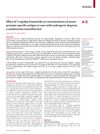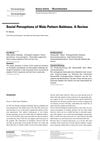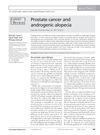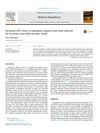Androgenic Alopecia May Have Evolved to Protect Men from Prostate Cancer by Increasing Skin Exposure to Ultraviolet Radiation
October 2007
in “
Medical Hypotheses
”
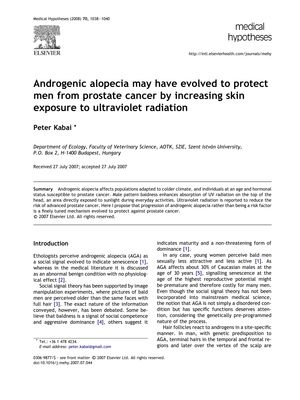
TLDR Male pattern baldness might have evolved to help protect against prostate cancer by increasing UV radiation on the scalp.
The document hypothesizes that androgenic alopecia (AGA), commonly known as male pattern baldness, may have evolved as a protective mechanism against prostate cancer by increasing the skin's exposure to ultraviolet (UV) radiation. The author suggests that baldness enhances UV absorption on the scalp, which has been associated with a reduced risk of advanced prostate cancer. The hypothesis is based on the observation that AGA affects populations adapted to colder climates and individuals at an age and hormonal status susceptible to prostate cancer. The paper also discusses the social perception of baldness and its potential signaling of senescence or dominance. It proposes that the shared androgen pathways leading to AGA and prostate cancer indicate a finely tuned evolutionary mechanism. The author calls for epidemiological studies to include questions on AGA status and sun exposure to test the protective role of AGA against prostate cancer. The paper also considers the implications of this hypothesis for the treatment of AGA and prostate cancer, suggesting that patients treated with finasteride, a 5α-reductase inhibitor, might need advice on compensating for reduced sun exposure.
